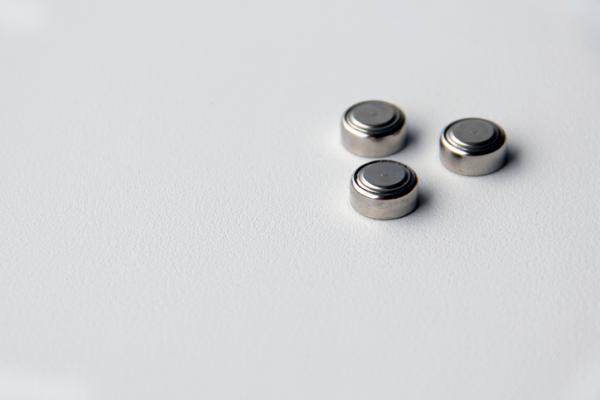Find out if you could be a foster carer
In a few simple questions, you’ll know if you’re suitable to apply to become a foster carer.
Hundreds of preventable accidents happen across the UK every day, and a large number involve children and young people. Indeed, in 2017 alone, the Child Accident Prevention Trust (CAPT) reported that three children a week died in avoidable circumstances and a further 2,000 were admitted to hospital – raising questions about what more can be done to prevent accidents and keep children safe.
At the NFA, we recognise the importance of accident prevention and work closely with our foster carers to make sure they’re given the best possible training and advice on keeping children safe. To demonstrate the range of different risks in the home, we’ve compiled a list of 10 common childhood accidents and how best to avoid them in your home.
Cords for window blinds are among the most dangerous items in the home and present a significant strangulation risk to young children. Such is the danger of blind cords, that new safety standards were introduced in 2014, requiring additional features to be added to blinds to help prevent strangulation.
For new foster families who may not be used to having young children around the home, it’s vital that you secure your blind cords before they move in. Make sure you fit a cleat hook to tie cords up and out of reach, and tell the child about the importance of not playing with the blinds. When buying new blinds, opt for those with a break feature so that they snap loose under pressure.
While all batteries present a risk to young children, the most dangerous may, in fact, be the smallest. In recent years, there have been a growing number of cases of children swallowing button batteries, which are commonly found in watches and small toys. When swallowed, these batteries can get lodged in the throat and burn a hole through the lining, causing permanent damage and often the need for ongoing medical support.

The best way to prevent your child swallowing a button battery is to treat them like any other hazardous item and keep them locked away and out of reach. You should also supervise young children who are playing with a toy which contains a button battery, and make sure they don’t take them apart. Always replace batteries yourself and dispose of the old ones straight away.
Although the dangers of baths are widely known, preventable deaths and near misses continue to be an issue across the country. In fact, in 2015, Public Health England kick-started a new awareness campaign to reiterate the dangers of unsupervised baths after a spike in the number of young children drowning in tragic bath-time accidents.
When caring for very young children, you should always supervise bath time and never leave them in the tub unattended. Extra precaution should be taken when using a bath seat, as they can topple over and trap the child underwater. According to RoSPA, 1 in 3 accidental drownings in young children involve a bath seat.
Colourful laundry detergents can be attractive to young children and can easily be mistaken for something to drink, like a milkshake. However, one of the new dangers of the utility room is the liquitab, which have caused a rise in cases of household chemical burns among children in recent years.
The problem with liquitabs is that they can be easily mistaken for colourful sweets or toys, piquing a child’s interest even when they’re kept in a container. For this reason, it’s vital that they’re stored out of sight and reach of children, preferably in a locked cabinet.
Choking on food remains one of the most common preventable accidents among children and young people, and the results are often fatal. In very young children, it can be difficult to spot the signs of choking, so it’s crucial that you monitor mealtimes and make sure their food is properly cut into manageable pieces.
Some of the problem foods most likely to cause choking include grapes, nuts, carrots and sweets, so make sure these are cut up where possible. First aid training from the NFA will also help you deal with the aftermath of choking.

Young people who use hair straighteners are at risk of serious burns, with the plates on such appliances reaching temperatures of over 200°C. It’s absolutely crucial that children understand the risks of using hot appliances near their face and head, as they can cause serious burns which leave permanent scarring.
Make sure a child knows how to use hair straighteners and curling wands properly when they start using them independently and reiterate to them the importance of switching them off after use.
While most parents understand the risks of medications and keep them out of reach and sight of children, it can be all too easy to leave a packet of painkillers within easy reach of little hands. Young children often don’t comprehend the danger of medications and are attracted to tablets, particularly Ibuprofen, because they mistake them for sweets.
While manufacturers are doing more to make painkillers less attractive to youngsters, it’s crucial that all medications are kept locked away out of reach. Overdosing is a very real danger to young children, and all it takes is one preventable mistake to end in tragedy.
Although we often take them for granted, staircases are among the most dangerous obstacles in the home, and every effort should be made to keep them safe.

If you’re welcoming young children into your home for the first time as a foster carer, you may need to invest in child safety gates to prevent them accessing the stairs without you knowing. Make sure these are installed at the bottom and the top of the stairs to avoid fall-related injuries. You may also want to think about lowering your handrails slightly so that children can grab hold as they climb.
Open ponds and water features in the garden are irresistible to children, who will instinctively be drawn to them. Sadly, statistics show that around 40% of all drownings at residential locations happen because a child has fallen into an open garden pond, so it’s crucial that you take steps to make your outdoor space safe for curious youngsters.
When fostering very young children or babies, it’s important that they’re supervised while playing in the garden. You’ll need to cover the pond or fence it off while caring for young children, as the risks of not doing so are simply too high. You should also be alert when visiting friends and family who may have an uncovered pond.
While cases of dog bites on residential property are extremely uncommon, they can happen, and when they do they often involve children. No matter how much you love and trust your animals, when they meet an unfamiliar child who may be unwittingly a little rough with them, accidents can happen. So, foster carers who regularly welcome new people into their home should be extra careful when introducing the family pet.
As a rule of thumb, you should only ever let your dog around young children when you’re there to supervise. If you’re worried the child is being a little too rough with them, raise this with them before the situation can escalate, and consider muzzling your dog if it’s known to be an excitable breed – especially during the initial introduction.
At the NFA, we offer full training and support to all our foster carers, helping them offer a safe, loving and nurturing home to children and young people in need. Visit the homepage for more information or call our team on 0330 022 9135 to start your fostering journey today.